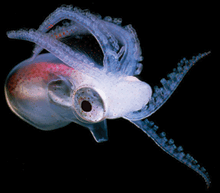
The Human Microbiome meeting was awesome...
Here's a 16S phylogeny of bacteria that live in the human airway:
here's some other places on the body
Anyways, cool stuff.
So my ears are itching, because yesterday the local genome centre was doing quality control on our libraries of Haemophilus influenzae recombinants (and controls)… If all goes well, we'll get scads of data in a couple weeks!
But I also need to get the work of our "Phase II" plan for Genome BC off the ground quickly, so we'll have samples to submit within a couple months of getting this incoming "Phase I" data.
The goal is to make maps of transformation frequency across the H.flu genome, when our standard lab strain Rd is transformed by DNA from clinical isolates with varying distributions of genetic variation. We hope to be able to investigate the sequence factors controlling the chance of homologous recombination, not only the effects of divergence, but also the role of chromosomal position, for example proximity to transformation hotspots.
There are two parts to making these transformation maps, the experiment itself and the sequence analysis. For the latter, we have worked out a strategy, but I'll just give a brief synopsis here: The challenge is basically to be able to make frequency estimates that are nearly as low as the sequencing error rate. We plan to handle this by using the very high co-transformation rate of adjacent SNPs and the high density of SNPs between H.flu isolates. Thus we will use information within reads and between paired reads to distinguish true transformation from spurious errors.
The basic experiment is really straightforward: (1) Incubate donor DNA with competent cells, allowing for uptake and recombination. (2) Purify the recipient chromosomes. (3) Sequence these to extremely high genomic coverage and measure the donor-specific allele frequency at each polymorphic site.
While that sounds simple, there will be a bunch of challenges ahead in getting this done properly (and on-time). We've got a pretty got a pretty good plan for handling the issues, so I think we'll be able to make appropriate samples for sequencing:
- We need as highly competent of cultures as possible. Our sensitivity will depend on sequencing chromosomal DNA fragments from as few non-competent cells as possible.
- We need very high complexity libraries, since we will be sequencing to several thousand fold genomic coverage of each library.
- We need replication.
- We need more than one clinical isolate to donate its DNA (so that we can actually make this into a real experiment).
- We need controls.
- We need to show that we don't have to worry about donor DNA contamination (i.e. donor sequences that weren't recombined into the chromosome).
This week, I'm going to test MIV transformation of wild-type Rd and a couple of our hypercompetent mutants (murE and sxy-1) with/without cyclic AMP to see which gives the highest transformation frequencies (and least congression). (I'll start just with our regular old MAP7 DNA). We reason that this will not alter the transformation frequency map in an important way, because the hypercompetent mutants and addition of cAMP affect the regulation of competence, rather than its consequences.
I am tempted to try transforming H.flu circa 1961 and make the crazy blood brain heart media and do an anoxic transformation. Their transformation frequencies were so high in the sixties! It might be worth doing, though the difference could perhaps be something other than the culture conditions (perhaps our strain has changed?)… It would also require, ahem, some fairly odious preparation...
Anyways, I'll try and keep the blog updated on this experiment's progress (and later the sequence analysis) as things move along…


Do we still have a bottle of blood in the fridge?
ReplyDelete